 | ||
Similar Atacama Desert, Laguna Verde, Our Lady of the Rosary Cathedral, Bosque de Fray Jorge National, Ojos del Salado | ||
10 flowering desert in chile s north living atlas chile
The flowering desert (Spanish: desierto florido) is a climatic phenomenon that occurs in the Atacama Desert, Chile. The phenomenon consists of the blossoming of a wide variety of flowers between the months of September and November in years when rainfall is unusually high. Normally the region receives less than 12 mm (0.47 in) of rain a year.
Contents
- 10 flowering desert in chile s north living atlas chile
- Plant and animal life
- Conservation
- Flowering
- References
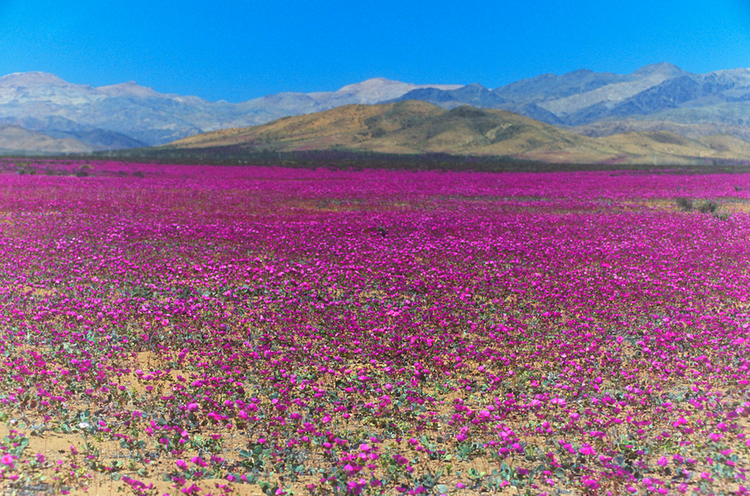
The blossoming occurs when the unusual level of rainfall reach the seeds and bulbs that have been in a latent or dormant state and causes them to germinate and flower in early spring. It is accompanied by the proliferation of insects, birds and small species of lizard. At its height, the phenomenon can be seen from just south of the city of Vallenar to just north of the city of Copiapó throughout the coastal valleys and Chilean Coast Range from September to November.
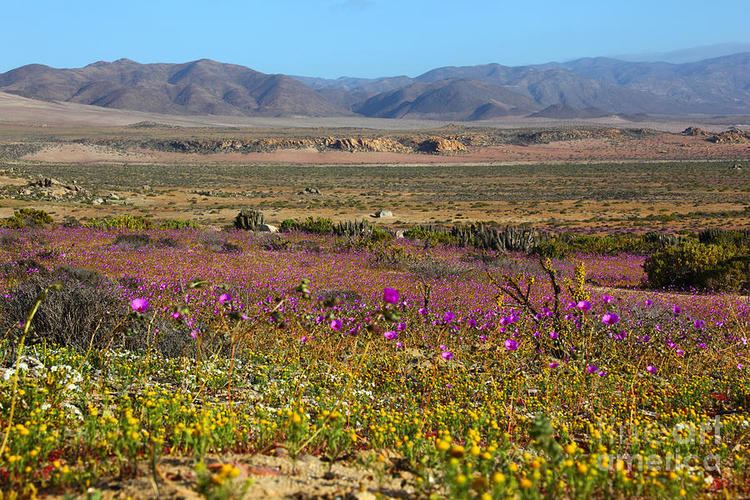
Climatically, the event is related to the El Niño phenomenon, a band of anomalously warm ocean water temperatures that occasionally develops off the western coast of South America, which can lead to an increase in evaporation and therefore precipitation.
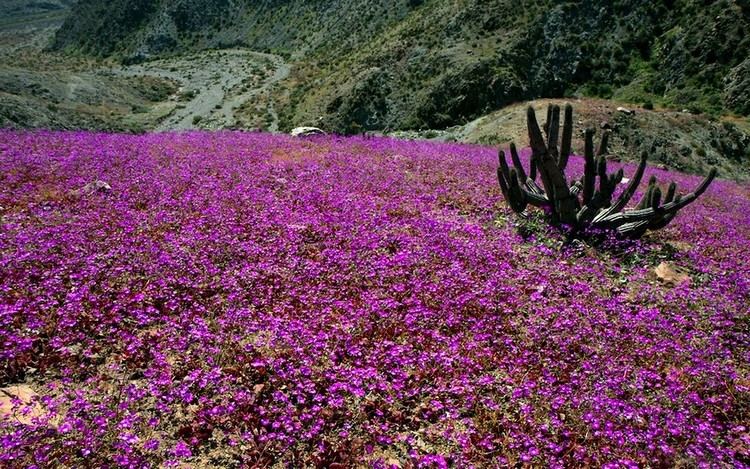
The flowering desert is a popular tourist attraction with tourists visiting the phenomenon from various points around the southern Atacama, including Huasco, Vallenar, La Serena, Copiapó and Caldera.
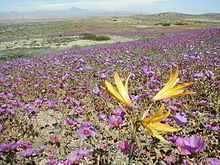
Plant and animal life
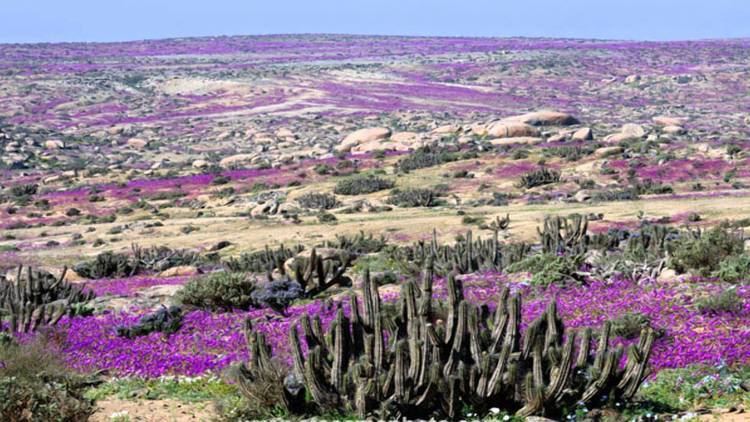
The flowering desert involves more than 200 species of flower, most of them endemic to the Atacama region. The different species germinate at different times through the flowering desert period. Some of the most common species include:

The region is also home to cacti, succulents and other examples of xerophilous plants, as well as animal species including the Tuco-tuco and the Four-Eyed Frog.
Conservation
In recent years, concerns have been raised by environmental organizations about the potentially damaging effects of large numbers of tourists visiting the flowering desert, the illegal trade of native flower species, and the development of motorsport. Environmental organizations have suggested that these activities limit the potential for regeneration of the existing species. In response to this, the Chilean Government has established a series of prohibitions and controls, in addition to informative campaigns to the public, and especially to tourists, in order to limit the damage.
Flowering
The phenomenon is strictly dependent on above-average rainfall, although highly excessive rainfall has been seen to limit blooming. In 1997, for example, the region saw very high total rainfall - 129.4 mm for Copiapó and 168.5 mm for Vallenar, which were respectively 978% and 433% above average. Despite this high rainfall, desert flowering was minimal.
In one day in March 2015, parts of the area received 23mm of rain, causing flowering in September and October 2015.
